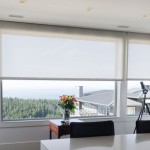When someone mentions camping, I bet the first things that come to your mind are a vast field and you and your tent, peacefully gazing at the stars. I know that’s the first thing that pops in my head. So, naturally, what most people spend most of their money on and time choosing is definitely the tent, but have you ever thought about the importance of having a good flashlight with you? I bet you haven’t. After all, it is your second pair of eyes once the sun sets, helping you stay safe, know what you are doing and where you are going.

Many people underestimate these tools because they think that anything that emits light should do the job just fine. But the truth is, a good flashlight camping model is an investment that will make a world of difference in your camping experience. Just think about the peace of mind you will have knowing that you have a reliable flashlight that you can use in any situation you can think of. However, not just any flashlight will do – you need one that’s packed with nothing but the best features and it is sturdy enough to withstand rough weather conditions. Without further ado, let’s take a look at some of the features you need to consider when looking for the best flashlight camping model for your needs.
Light output
Light is measured in lumens and it is certainly one of the most important features to pay attention to. Light output can range from 20 lumens (best for basic activities like reading) to 3500 lumens. Truth be told, LED flashlights are the best choice for camping, as they have a long lifespan and are mercury free. There are still some flashlights that come with krypton bulbs but they can not beat the run time, energy efficiency, brightness options and the impact resistance of LED flashlights. LEDs ensure you will get a powerful light without wasting a lot of your flashlight’s battery.
Battery type
Disposable AAA or AA batteries are the most common ones and they can be easily found on the market. CR123A disposable batteries are also a good choice but they can be hard to find and turn out to be the more expensive option. They offer a higher voltage output, are smaller in size and weigh less. Rechargeable batteries are another option – they can be recharged using a USB connection from a solar panel, a computer, and an AC or a DC outlet.
Materials and Shape
Most flashlights are made of aluminum alloy or plastic. Some models feature stainless steel in their head offering a higher level of impact resistance. Aluminum flashlights are a good choice but keep in mind that not all aluminum bodies are the same. The thicker styles are tougher while the thinner ones are lighter. When it comes to shape, cylindrical bodies are the most common ones. They easily roll when laid on a surface, but there are some models that are designed in a different way. Some bodies may come with a knurled pattern to reduce slipping and provide a more convenient grip.


